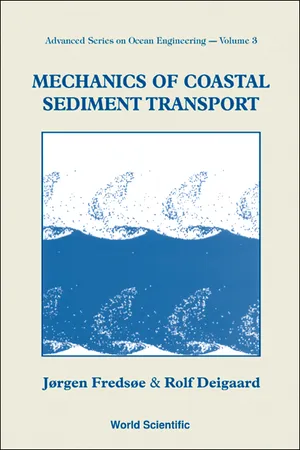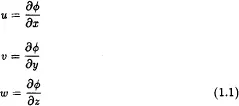
- 392 pages
- English
- ePUB (mobile friendly)
- Available on iOS & Android
Mechanics of Coastal Sediment Transport
About this book
This book treats the subject of sediment transport in the marine environment, covering transport of noncohesive sediment by waves and currents in- and outside the surf zone. It can be read independently, but a background in hydraulics and basic wave mechanics is required.
The primary aim of the book is to describe the physical processes of sediment transport and how to represent them in mathematical models. The book can be divided in two main parts; in the first, the relevant hydrodynamic theory is described. This part contains a review of elementary theory for water waves, chapters on the turbulent wave boundary layer and the turbulent interaction between waves and currents, and finally, surf zone hydrodynamics and wave driven currents.
The second part covers sediment transport and morphological development.The part on sediment transport introduces the basic concepts (critical bed shear stress, bed load, suspended load and sheet layer, near-bed concentration, effect of sloping bed); it treats suspended sediment in waves and current and in the surf zone, and current and wave-generated bed forms. Finally, the modelling of cross-shore and long-shore sediment transport is described together with the development of coastal profiles and coastlines.
Contents:
- Basic Concepts of Potential Wave Theory
- Wave Boundary Layers
- Bed Friction and Turbulence in Wave-Current Motion
- Waves in the Surf Zone
- Wave-Driven Currents
- Current Velocity Distribution in the Surf Zone
- Basic Concepts of Sediment Transport
- Vertical Distribution of Suspended Sediment in Waves and Current Over a Plane Bed
- Current-Generated Bed Waves
- Wave-Generated Bed Forms
- Cross-Shore Sediment Transport and Coastal Profile Development
- Longshore Sediment Transport and Coastline Development
Readership: Ocean and electronics engineers, geologists, mathematical physicists and graduate students.
Frequently asked questions
- Essential is ideal for learners and professionals who enjoy exploring a wide range of subjects. Access the Essential Library with 800,000+ trusted titles and best-sellers across business, personal growth, and the humanities. Includes unlimited reading time and Standard Read Aloud voice.
- Complete: Perfect for advanced learners and researchers needing full, unrestricted access. Unlock 1.4M+ books across hundreds of subjects, including academic and specialized titles. The Complete Plan also includes advanced features like Premium Read Aloud and Research Assistant.
Please note we cannot support devices running on iOS 13 and Android 7 or earlier. Learn more about using the app.
Information

























Table of contents
- Cover Page
- Title Page
- Copyright Page
- Table of Contents
- Introduction
- List of Symbols
- 1. Basic concepts of potential wave theory
- 2. Wave boundary layers
- 3. Bed friction and turbulence in wave-current motion
- 4. Waves in the surf zone
- 5. Wave-driven currents
- 6. Current velocity distribution in the surf zone
- 7. Basic concepts of sediment transport
- 8. Vertical distribution of suspended sediment in waves and current over a plane bed
- 9. Current-generated bed waves
- 10. Wave-generated bed forms
- 11. Cross-shore sediment transport and coastal profile development
- 12. Longshore sediment transport and coastline development
- Appendix I.: Wave table: Sinusoidal waves
- Appendix II.: Derivation of the k-equation
- Appendix III.: Additional references
- Subject Index
- Back Cover